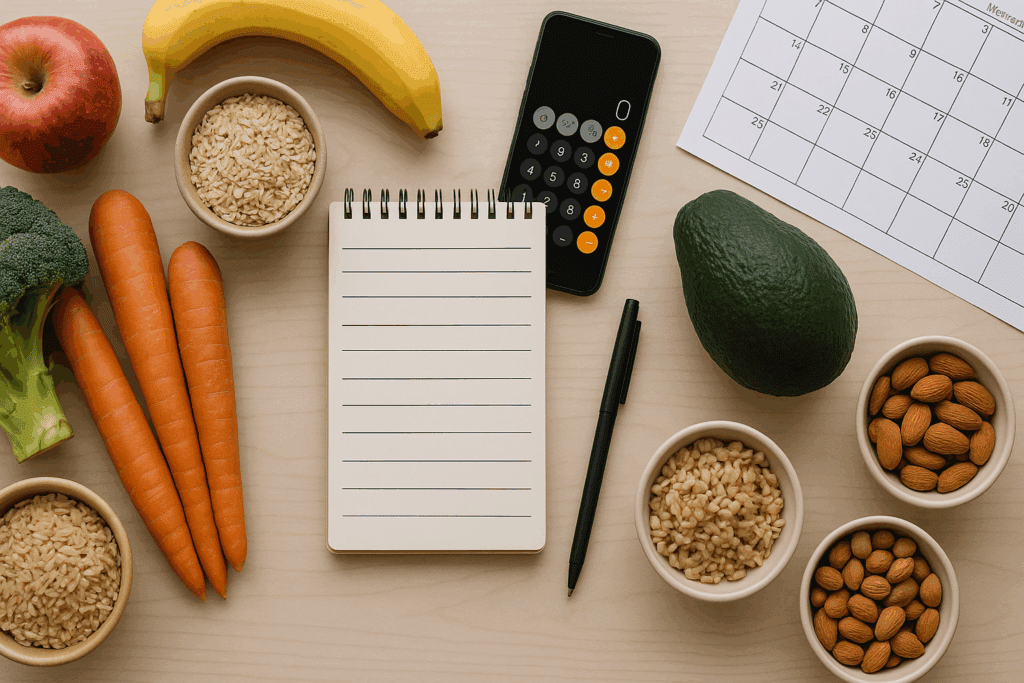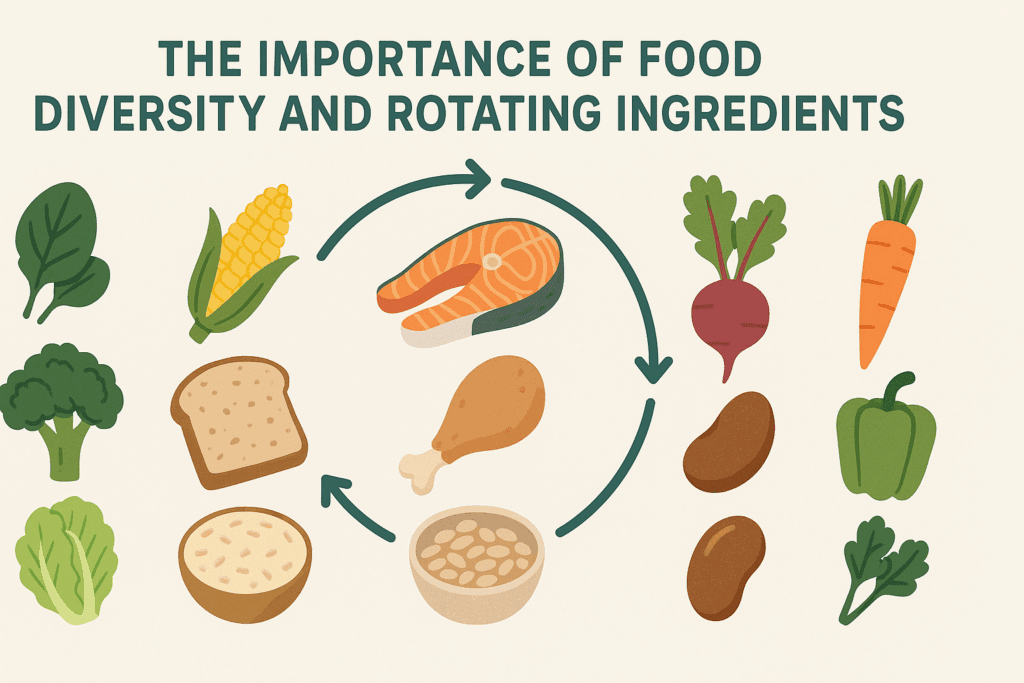In today’s fast-paced world, health-conscious consumers are increasingly turning toward whole foods as a foundation for better nutrition and overall well-being. This growing movement is not just about clean eating trends; it represents a deeper shift toward sustainable health, where every item on your shopping list becomes a reflection of mindful intention. Building a smart whole foods grocery list is not merely a routine errand—it’s a proactive commitment to supporting long-term wellness. The key lies in creating a strategy that balances nutrition, affordability, variety, and real-life practicality.
Understanding what goes into a well-constructed whole foods shopping list requires more than browsing the produce aisle. It takes an intentional approach rooted in scientific knowledge, cultural understanding, and practical household habits. This article explores expert-backed strategies that help readers not only identify the best items to include on their whole foods grocery list but also understand why those choices matter in the broader context of health, sustainability, and daily life.
You may also like: How a Whole Foods Diet Supports Sustainable Weight Loss: Expert Tips for Eating Whole Foods to Lose Weight Safely

Defining Whole Foods and Their Role in a Healthy Diet
Whole foods, by definition, are foods that are minimally processed and as close to their natural state as possible. This includes fresh fruits and vegetables, whole grains, legumes, nuts, seeds, and lean proteins like wild-caught fish or pasture-raised poultry. What makes these foods so vital is not only their nutritional density but their lack of additives, refined sugars, and synthetic preservatives. A smart whole foods shopping list, therefore, is grounded in unrefined ingredients that support optimal body function.
The benefits of a whole foods diet are well-documented across nutritional science. These foods are rich in fiber, essential vitamins, antioxidants, and phytonutrients—elements that have been shown to reduce inflammation, balance blood sugar levels, support digestive health, and even enhance cognitive function. Integrating such items into your everyday eating routine fosters not just short-term vitality but long-term disease prevention. Whether you’re navigating weight management, improving gut health, or simply aiming for more energy throughout the day, what you place in your grocery cart makes a significant impact.
Moreover, choosing whole foods also supports mindful eating practices. When we slow down and engage more intentionally with meals made from whole ingredients, we reconnect with natural flavors and hunger cues, making it easier to maintain a balanced diet. Shopping for whole foods thus becomes an exercise in self-awareness and self-care, aligning your consumption habits with your health goals.

How to Build a Smart Whole Foods Grocery List
Creating an effective whole foods grocery list starts with thoughtful planning and clear intention. One of the most strategic approaches involves organizing your list by food group rather than by aisle. This allows you to maintain focus on nutritional balance rather than being swayed by marketing tactics or impulse purchases. Start with foundational groups like vegetables, fruits, proteins, grains, and healthy fats. Each category should reflect variety and color—a good rule of thumb is to “eat the rainbow” to ensure you’re getting a broad spectrum of nutrients.
When selecting produce, aim for seasonal and locally grown options whenever possible. These not only offer superior flavor and freshness but are often more affordable and environmentally friendly. For grains, choose intact or minimally processed varieties such as quinoa, brown rice, oats, and farro. These grains provide lasting satiety and are rich in B-vitamins, iron, and fiber. Legumes like lentils and chickpeas are excellent plant-based protein sources that are both budget-friendly and versatile across cuisines.
Proteins should come from clean, minimally processed sources. Organic eggs, wild-caught fish, grass-fed beef, and tempeh all align with whole food principles. Don’t forget about healthy fats—avocados, extra virgin olive oil, raw nuts, and seeds are essential for hormonal balance and nutrient absorption. As you build your whole foods grocery list, consider your week ahead: What meals will you cook? Which ingredients can be repurposed? Doing this not only reduces food waste but also simplifies meal prep and saves money.

Reading Labels and Avoiding Pitfalls
Even in health food stores, it’s easy to fall into the trap of buying products that appear wholesome but are, in fact, ultra-processed. A crucial component of a mindful whole foods shopping list is learning how to decipher food labels. Look for short ingredient lists and avoid products with added sugars, refined flours, hydrogenated oils, and artificial flavorings. If you can’t pronounce an ingredient or it sounds like it belongs in a chemistry lab, it probably doesn’t belong in your cart.
Be especially cautious with items marketed as “natural,” “organic,” or “gluten-free” – these labels can be misleading. A food can be organic yet still loaded with added sugar or sodium. The same applies to so-called healthy snacks, which may contain processed protein isolates or sugar alcohols. Sticking to whole, recognizable ingredients is the most reliable way to stay on track. For packaged items that do pass the test, such as canned beans or frozen vegetables, ensure they come with minimal additives and are BPA-free when possible.
By becoming a more informed consumer, you empower yourself to make decisions that align with your health objectives. Understanding the nutritional profile and ingredient integrity of each product transforms a simple grocery run into a powerful act of nourishment.

Planning for Meal Prep and Batch Cooking
An efficient whole foods grocery list supports not just healthier eating but also practical meal preparation. Meal prep is a cornerstone of successful whole food living because it eliminates the guesswork and last-minute decisions that often lead to unhealthy takeout or processed convenience foods. Begin by mapping out your meals for the week, choosing dishes that share common ingredients to minimize waste and streamline your shopping process.
For example, a batch of roasted sweet potatoes can serve as a side dish, a salad topper, and a breakfast hash component. Cooked quinoa might anchor a grain bowl one day and be repurposed into stuffed bell peppers the next. Think in terms of building blocks: roasted vegetables, cooked grains, lean proteins, and flavor-enhancing condiments like homemade vinaigrettes or tahini-based dressings. These components can be prepped in bulk and mixed and matched throughout the week.
Freezing is another helpful tactic for whole food meal planning. Chopping and freezing surplus herbs, broths, or even smoothie-ready fruits in advance saves time and money. This foresight ensures that your whole foods grocery list supports multiple meals, giving you the structure you need to stay consistent while reducing the stress of daily cooking decisions.

Budget-Friendly Tips for Shopping Whole Foods
Contrary to popular belief, a whole foods grocery list does not have to break the bank. With thoughtful planning and a few strategic habits, eating clean can actually be quite affordable. Start by prioritizing staples that offer maximum nutrition for minimal cost. Items like beans, oats, brown rice, and seasonal produce are inexpensive yet highly nutritious. Buying in bulk—either from bulk bins or warehouse stores—can significantly reduce costs on dry goods like lentils, nuts, seeds, and grains.
Another cost-saving tip is to buy frozen fruits and vegetables. These are often flash-frozen at peak ripeness, preserving both flavor and nutritional value. They’re ideal for smoothies, stir-fries, and soups, and they offer convenience without compromising health. Additionally, shopping at farmers’ markets close to closing time can yield discounts as vendors look to sell off remaining stock.
When it comes to animal products, consider quality over quantity. You don’t have to consume meat daily; plant-based proteins can provide excellent nutritional support. When you do buy meat or fish, opt for ethically sourced options in smaller portions. Lastly, avoid food waste by planning your meals ahead of time, storing items properly, and repurposing leftovers creatively.

The Importance of Food Diversity and Rotating Ingredients
One of the most overlooked components of a balanced whole foods grocery list is food diversity. Eating the same five healthy meals each week may seem efficient, but it can actually limit your exposure to essential nutrients. Each plant and protein source offers its own unique profile of vitamins, minerals, and beneficial compounds. By rotating your ingredients regularly, you can maximize nutritional coverage and keep meals exciting.
For example, alternate your greens between spinach, kale, arugula, and chard. Swap out brown rice for farro, barley, or buckwheat. Vary your protein sources by incorporating beans, lentils, tofu, eggs, fish, and poultry throughout the week. Diversity not only enhances your microbiome health—a crucial factor in digestion and immunity—but also helps reduce the risk of developing food intolerances due to overexposure to the same ingredients.
A diversified whole foods shopping list also broadens your culinary horizons. It encourages experimentation with global cuisines, new cooking techniques, and unfamiliar produce. This can transform eating into a creative and joyful experience, helping you maintain long-term enthusiasm for a healthy lifestyle.

Environmental and Ethical Considerations When Shopping
Creating a smart whole foods grocery list isn’t just about personal health; it also ties into broader environmental and ethical issues. The way we choose our food has a profound impact on planetary health. Prioritizing locally grown produce, for instance, reduces carbon emissions associated with long-distance transportation. Opting for organic options can limit pesticide exposure and promote biodiversity by supporting regenerative farming practices.
When purchasing animal products, look for certifications that indicate humane treatment and sustainable farming methods. Labels such as Certified Humane, Animal Welfare Approved, or Marine Stewardship Council can guide more ethical purchases. Additionally, consider reducing your reliance on single-use plastic by bringing reusable bags and containers when shopping.
These mindful habits elevate your whole foods grocery list into a conscious act of environmental stewardship. They reflect a holistic approach to wellness that acknowledges our interdependence with the planet and the systems that produce our food.
Putting It All Together: A Holistic Approach to Smart Grocery Shopping
The value of a well-crafted whole foods shopping list goes far beyond the ingredients themselves. It represents a lifestyle centered around intentionality, nourishment, and self-respect. Every choice you make in the grocery store either reinforces or detracts from your larger health goals. By cultivating awareness, prioritizing nutrient density, and respecting your budget, you build a foundation for a truly sustainable way of eating.
Even small adjustments can lead to meaningful change. Perhaps you begin by replacing sugary cereals with steel-cut oats or swapping processed deli meats for roasted chickpeas. Each mindful substitution creates momentum toward a healthier and more empowered lifestyle. Over time, these seemingly small decisions compound, resulting in improved energy, reduced cravings, and a deeper connection to the food you eat.
Remember, your grocery list is more than a set of tasks to complete—it’s an evolving tool that helps you align your daily habits with your long-term vision of health. Treat it as such, and it becomes a powerful expression of personal care and conscious living.
Frequently Asked Questions: Smart Whole Foods Grocery List Strategies
1. How can a whole foods grocery list help support mental clarity and emotional well-being? A thoughtfully planned whole foods grocery list goes far beyond physical health; it can also support mental clarity and emotional balance. Nutrient-rich foods such as leafy greens, omega-3 fatty acids from wild-caught fish, and complex carbohydrates like quinoa provide essential nutrients for brain function. These foods are known to support the production of neurotransmitters such as serotonin and dopamine, which regulate mood. Moreover, a whole foods shopping list that emphasizes magnesium- and B-vitamin-rich items can help reduce stress and improve sleep quality. Building a weekly whole foods grocery list with brain-supportive foods creates a dietary foundation that enhances focus, reduces irritability, and fosters emotional resilience.
2. What strategies can I use to stick to my whole foods shopping list at the store? Sticking to a whole foods shopping list requires preparation and discipline, but there are practical techniques to make it easier. One effective method is to eat before shopping; hunger can lead to impulsive choices that don’t align with your wellness goals. Another strategy is to shop the perimeter of the store first, where whole foods like produce, dairy, and proteins are typically located. Bringing a digital or paper version of your whole foods grocery list and checking off items as you go can keep you focused. By creating a ritual around your shopping experience, you transform it into a mindful practice rather than a chore.
3. How can I make a whole foods grocery list that accommodates a busy lifestyle? When your schedule is packed, efficiency becomes essential—and your whole foods grocery list should reflect that. One approach is to identify ingredients that serve multiple purposes across different meals. For instance, a bag of pre-washed spinach can be used in smoothies, sautés, and salads. You can also focus on convenience-enhancing items like frozen vegetables, pre-chopped produce, and vacuum-sealed grains that save time without compromising on nutrition. A time-conscious whole foods shopping list is built around flexibility, storage longevity, and quick preparation methods, allowing you to nourish yourself even on your busiest days.
4. What are some emerging trends in whole foods shopping I should know about? The future of whole foods grocery shopping is being shaped by innovation and sustainability. Shoppers are increasingly turning to regenerative agriculture products, which support soil health and biodiversity. Additionally, technologies like QR-code transparency and blockchain traceability allow consumers to verify sourcing and farming practices. More people are also including upcycled food products in their whole foods shopping list—such as flours made from vegetable pulp or snacks made from rescued fruit. These trends reflect a growing desire to align food choices with environmental ethics and personal health goals.
5. How can I adapt my whole foods grocery list to seasonal availability? Adapting your whole foods grocery list to the seasons isn’t just budget-friendly; it’s also nutritionally strategic. Seasonal produce tends to be fresher, more flavorful, and more nutrient-dense due to reduced storage time. For example, winter squashes are rich in immune-supporting beta-carotene and fiber, while summer berries are antioxidant powerhouses. Incorporating seasonal variety keeps meals exciting and helps diversify your nutrient intake throughout the year. Following a seasonal template for your whole foods shopping list also encourages you to explore new recipes and flavor profiles that correspond with nature’s cycles.
6. Can a whole foods shopping list support digestive health, and if so, how? Absolutely—a targeted whole foods grocery list can be instrumental in improving digestive function. Including high-fiber foods like lentils, chia seeds, and cruciferous vegetables promotes regular bowel movements and feeds beneficial gut bacteria. Fermented options such as kimchi, kefir, and tempeh provide natural sources of probiotics, which enhance microbial diversity. Choosing anti-inflammatory ingredients like ginger, turmeric, and leafy greens can also soothe the digestive tract. Over time, a consistent whole foods shopping list that emphasizes these items can support improved nutrient absorption, reduced bloating, and enhanced immunity.
7. How can a whole foods grocery list promote better family eating habits? A family-oriented whole foods shopping list lays the groundwork for healthier, lifelong eating habits. By involving children and partners in the planning and shopping process, you foster food literacy and create opportunities for teaching nutrition in everyday contexts. Selecting fun, colorful produce together can build curiosity and willingness to try new foods. Whole foods grocery lists that include versatile staples—like eggs, sweet potatoes, brown rice, and bananas—can be easily adapted to suit different tastes and meal preferences. These shared habits make nutritious eating feel inclusive and enjoyable rather than restrictive.
8. What overlooked pantry items should I consider adding to my whole foods shopping list? Pantry staples often set the tone for your entire diet, and certain nutrient-dense options are often underutilized. Shelf-stable items like amaranth, blackstrap molasses, and seaweed flakes can elevate your whole foods grocery list with unique nutritional profiles. Canned wild salmon, jarred artichokes, and organic tomato paste provide flexibility and depth in quick meals. Spices such as sumac, smoked paprika, and cardamom not only enhance flavor but offer powerful antioxidant properties. Including these lesser-known pantry ingredients adds culinary excitement and boosts the overall quality of your whole foods shopping list.
9. How can a whole foods grocery list be optimized for athletic performance or fitness goals? For those focused on fitness, tailoring your whole foods grocery list around training demands can improve endurance, recovery, and body composition. Prioritize complex carbohydrates like sweet potatoes and steel-cut oats for sustained energy, and pair them with lean proteins such as eggs, chicken thighs, or tofu for muscle repair. Electrolyte-rich foods like coconut water, watermelon, and leafy greens help with hydration and cramp prevention. Additionally, foods high in anti-inflammatory compounds—such as berries and turmeric—can reduce exercise-induced oxidative stress. A strategically designed whole foods shopping list becomes a performance-enhancing tool when customized to your athletic needs.
10. What are the long-term psychological benefits of consistently using a whole foods grocery list? Beyond physical health, using a whole foods grocery list regularly can yield profound psychological rewards. Establishing a routine around conscious food selection builds self-efficacy, reinforcing the idea that you are capable of making informed, nourishing choices. This practice fosters a positive feedback loop: the more consistently you eat well, the more mentally energized and motivated you feel. Over time, a whole foods shopping list becomes a symbol of self-respect and intentionality, promoting a greater sense of control and life satisfaction. This psychological reinforcement can be particularly powerful during life transitions or periods of stress, when consistency and self-care matter most.
Conclusion: Transform Your Health with a Thoughtful Whole Foods Grocery List
In an era defined by convenience and information overload, the practice of curating a smart whole foods grocery list stands out as a radical act of mindfulness and self-care. It challenges the notion that health must be complicated, expensive, or restrictive. Instead, it embraces simplicity, balance, and intentionality—principles that are at the heart of both nutritional science and holistic wellness.
By integrating the right foods into your shopping routine, you gain more than just physical health. You gain clarity, focus, emotional resilience, and a deeper connection to the rhythms of your body and the world around you. Whether you’re just beginning your wellness journey or refining an already mindful routine, returning to the fundamentals of whole foods shopping will always serve you well.
Let your grocery list be your guide. Each time you sit down to plan your meals, choose foods that reflect your values, support your health, and nourish your future. With consistency, knowledge, and a bit of creativity, a well-planned whole foods grocery list becomes more than a shopping tool—it becomes a map to a healthier, more mindful lifestyle.
Was this article helpful? Don’t let it stop with you. Share it right now with someone who needs to see it—whether it’s a friend, a colleague, or your whole network. And if staying ahead on this topic matters to you, subscribe to this publication for the most up-to-date information. You’ll get the latest insights delivered straight to you—no searching, no missing out.
Further Reading:
How to Make a Healthy Grocery Shopping List
7-Day Heart-Healthy Meal Plan, Created by a Dietitian
Mindful Grocery Shopping: Making Healthy Choices
Disclaimer
The information contained in this article is provided for general informational purposes only and is not intended to serve as medical, legal, or professional advice. While NewsHealthWatch strives to present accurate, up-to-date, and reliable content, no warranty or guarantee, expressed or implied, is made regarding the completeness, accuracy, or adequacy of the information provided. Readers are strongly advised to seek the guidance of a qualified healthcare provider or other relevant professionals before acting on any information contained in this article. NewsHealthWatch, its authors, editors, and contributors expressly disclaim any liability for any damages, losses, or consequences arising directly or indirectly from the use, interpretation, or reliance on any information presented herein. The views and opinions expressed in this article are those of the author(s) and do not necessarily reflect the official policies or positions of NewsHealthWatch.

